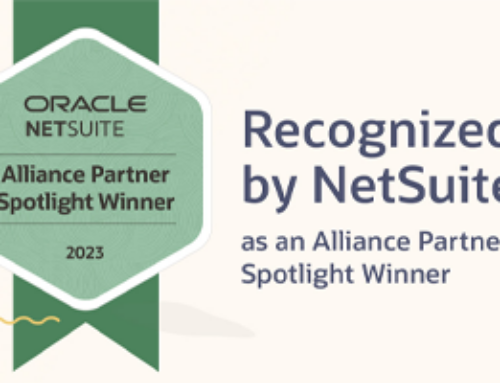Our Take: How NetSuite Supports ASC 842 Accounting Changes
Judy Wright, Vice President of Finance, BTM Global
The new lease accounting standard, ASC 842, is a big change for public and private companies in the U.S.
The rule was created to standardize how companies represent capital and operational leases, and to get American organizations aligned with how the rest of the world represents leases.
What is ASC 842?
ASC 842 is now in place and is required of all U.S. companies, with rare exceptions. Companies must break out lease details, and the deadline for private companies to be in compliance is the end of 2022.
To get a helpful overview of why ASC 842 was enacted and the changes it requires, watch this NetSuite video.
Managing ASC 842 Compliance
The requirements of ASC 842 will impact your balance sheet and require more attention from your finance team. Smaller companies or those with very few leases may be able to manage compliance using journal entries in Excel spreadsheets if they don’t currently have an ERP system, or if their current ERP system doesn’t have a function to support lease automation. But for larger companies, or those with many leases, they will find a lot of value from technology automation like the NetSuite NetLease module built in NetSuite ERP Apps, which helps manage all the necessary steps for lease compliance within the system.
With NetSuite, you can operationalize the work by putting lease schedules into the system so adjustments can be made automatically at the time of entry, and then automatically update the book each period. Without NetSuite, you (or your staff) will be spending a lot of time manually handling ASC 842 requirements, causing your accounting team to spend more hours with reconciliation, booking and reporting. NetSuite easily displays the trace of controls and compliance for reviews and audits at year-end.

ASC 842 is just the first of many regulatory changes expected in the next few years. If you don’t already have NetSuite, implementing it now will have a quick ROI for this accounting change and future requirements!
BTM Global’s Experience Complying with ASC 842
Here at BTM, we implemented the NetSuite NetLease module for ASC 842 compliance, and are very happy with the results.
Setting up the NetSuite Module for ASC 842 Compliance
If you’re waiting to get in compliance because you think it’s going to take a lot of time, you can rest easy. NetSuite can be set up for ASC 842 compliance in as little as a few days or weeks based on the complexity and volume of the leases. We set it up in just three days and are ready to help our clients do the same. It shouldn’t be a drawn-out process!
“With NetSuite NetLease function, getting in compliance has been swift and uncomplicated,” said Judy Wright, vice president of finance at BTM Global. “My staff is really happy with the NetSuite NetLease function because the automation saved a lot of set-up time and worries about manual mistakes inherent in the management of large Excel spreadsheets. We can rely on NetSuite to automatically produce updated reporting at each accounting period.”
Natalie Dale, NetSuite practice director at BTM Global, added: “Because we’ve gone through this process ourselves, we would love to share our experience and help clients set up NetSuite to get in compliance.”
Benefits of NetSuite and ASC 842 Compliance: From Excel to Automation
At BTM, we’re already seeing the benefits of using NetSuite for ASC 842 compliance. Here are the top reasons we think companies should consider NetSuite:
- Significant cost savings from many manual labor hours
- Automatic booking and posting
- Better control and compliance
- Quick and easy reporting
Cost savings: The time saved among your staff and the time saved for auditor reviews is significant. It will more than offset the cost of the NetSuite module.
“We first started to implement lease adoption by manually building all our leases through an Excel workbook with the help of a consultant from a CPA firm,” said Wright. “We did a lot of review and checking for the input and output in the spreadsheet…it was very time consuming for the team.”
She continued, “Later, I decided to explore the option of automation by using the NetSuite NetLease module. Now I have experienced doing it both manually and automatically, and I can clearly see the benefits of using NetSuite. If there is a change, you can just update the data in the system, and then the system will automatically recalculate and update the booking within a minute. It gets you into compliance in the most efficient and effective way.”
It’s automatic: You’re going to save hundreds of hours of manual work if you use NetSuite instead of spreadsheets. Here’s why:
- Easily manage different types of leases, renewals and term processes
- Quickly update or change the current lease, and calculate the true-up
- Get automatic monthly journal entries and rebalance between accounts
- NetSuite records amortization and decreases the lease liability based on the payment schedule – and records interest expenses
Here’s an example: If you’re setting up Excel spreadsheets for each lease, you have to be certain that you have the right type of lease and that everything is validated and recorded by the right people at the right stage of the process. With NetSuite, that’s all done automatically. All you have to do is input information for one lease on one screen, and NetSuite calculates and validates the rest. If you need to change the lease type or term, the rules automatically adjust and the information is rebalanced. Reports are generated automatically. If you’re using Excel, all of that work is done by hand.
Better control and compliance: NetSuite allows for internal review and approval based on roles. In addition, you can work with bulk uploads to save time. NetSuite will provide data validation function and alert you to any errors based on ASC 842 rules.
For auditors, there is lower control risk because of the proper controls set up in NetSuite and the automation. The system handles the controls, approvals, review and confirmation. Every step is recorded about who did what and when. The automation, lease-level details and reporting help audits move more quickly, which will save you time and money.
Because it’s cloud-based, NetSuite is adaptable to any future changes to ASC 842 requirements. NetSuite experts understand and monitor the regulations, and will make adjustments to NetSuite automatically. Your finance team doesn’t have to track it, think about it, or rework the information.
Timely reporting:
- Standard report for all leases: The lease list displays period change and balance of mapped accounts, from lease start to lease finish.
- Roll-forward and reconciliation: Modification of future lease term, incremental borrowing rate, or lease termination allows for easy re-calculation.
- Reporting for disclosure.
With the automatic reporting function built into the system, we can review our lease every time we make changes in the system, and that helps us understand and evaluate the book impact from those changes, and then identify issues quickly and timely.
Other reports can be used for auditor reviews and disclosure purposes, which helps to simplify year-end financial review/audit process.
Get Started with NetSuite ASC 842 Compliance Now
Don’t wait until year end! Maximize productivity, controls and costs now while meeting compliance mandates.







